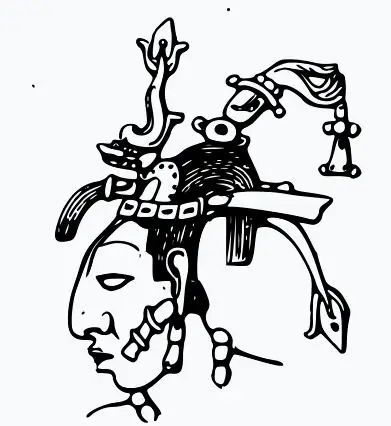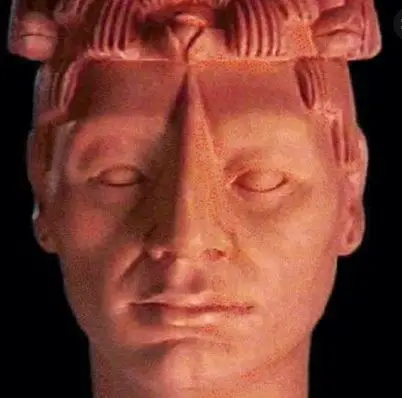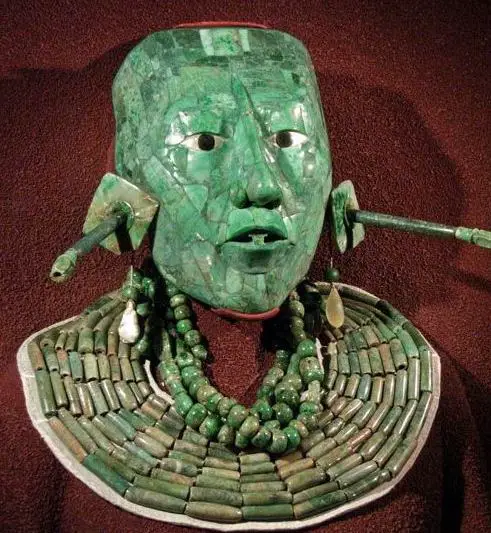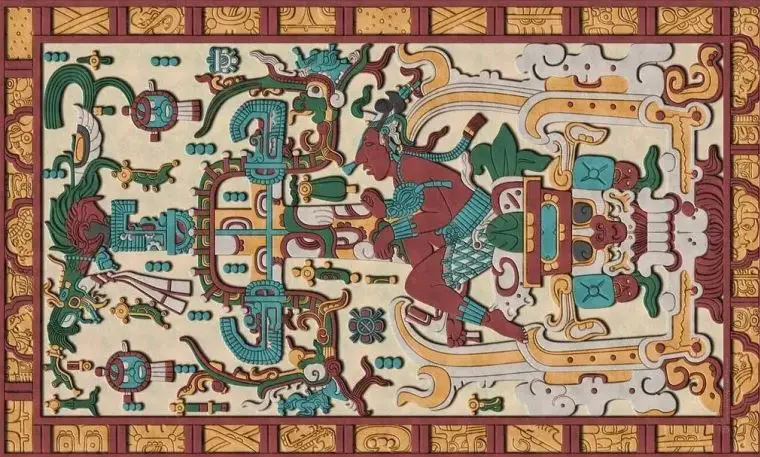Podcast: Play in new window | Download
Subscribe: Apple Podcasts | RSS
 March 11, 2020, seemed like an ordinary day to many, but to royal watchers it was extremely significant. Queen Elizabeth the Second of the United Kingdom became the 4th longest-reigning monarch in known human history. On that day she surpassed a little-known ruler, even to the most astute who follow royalty. Her Majesty took the 4th-longest-reigning-monarch title from Kʼinich Janaab Pakal, whose name among his people was Sun Shield, who ruled the jungle kingdom of Palenque in ancient Mexico for a total of 68 years and 33 days. He came to power when he was only twelve, and the monuments of his great city mark his accession day as July 26, 615 AD. He would die on August 28, 683 AD at the age of 80.
March 11, 2020, seemed like an ordinary day to many, but to royal watchers it was extremely significant. Queen Elizabeth the Second of the United Kingdom became the 4th longest-reigning monarch in known human history. On that day she surpassed a little-known ruler, even to the most astute who follow royalty. Her Majesty took the 4th-longest-reigning-monarch title from Kʼinich Janaab Pakal, whose name among his people was Sun Shield, who ruled the jungle kingdom of Palenque in ancient Mexico for a total of 68 years and 33 days. He came to power when he was only twelve, and the monuments of his great city mark his accession day as July 26, 615 AD. He would die on August 28, 683 AD at the age of 80.
To understand the world’s 5th longest-reigning monarch, we must understand the context in which he lived and ruled. Palenque, whose Maya name was Ba-ak Lakamha, is a UNESCO World Heritage site located in the eastern part of the Mexican state of Chiapas, near the present-day border with Guatemala. The city was part of the Maya civilization, which is not to be confused with the Maya Empire, which did not exist. Maya civilization was a loosely connected group of city states sharing the same cultural elements much like the ancient Greeks. So, Palenque was an independent city-kingdom ruled by a powerful dynasty. To this day the city is somewhat shrouded in mystery and only 10% of it has been excavated or thoroughly explored. No one even knows how old Palenque really is. Its first recorded ruler is supposed to have reigned in 2325 BC, but many archaeologists regard this as a mythological king. During its heyday, between about 400 AD and its collapse around 800 AD, Palenque was home to tens of thousands of people and a powerful and wealthy elite class. The city held dominion over an area of about 40 square kilometers which included rich soils and ample fresh water sources. It controlled minor settlements, many vital resources and important trade routes extending to other parts of Mesoamerica. People generally associate Palenque with Pacal the Great, who is known not only for his grandiose building projects but for his mysterious sarcophagus which some say depicts an ancient astronaut. Please see Mexico Unexplained Episode Number six for more information about the so-called Palenque Astronaut: https://mexicounexplained.com/the-palenque-astronaut-evidence-of-ancient-alien-visitation/. Before leaping to the end of his life and his intricate burial, what was Pacal’s life like and what situation was he born into?
 Pacal was born in the month of March in the year 603 AD which was an uncertain and tumultuous time for the Kingdom of Palenque. When Pacal was two years old Palenque was attacked by the powerful kingdom of Calakmul. They would attack two more times during Pacal’s youth, in 610 and 611 when the future king was just 7 and 8 years old. For more information about Calakmul, please see Mexico Unexplained Episode number 219: https://mexicounexplained.com/calakmul-kingdom-of-the-snake/ The written records thus discovered at the ruined city of Palenque give modern researchers a sketchy history of the early 600s AD. Archaeologists know that a new ruler was installed at Palenque after the Calakmul attack of 605, but little is known of him. Also, in the 611 Calakmul attack, Palenque lost its king. At that time there may have been a foreign ruler on the throne for a while or there could have been a power vacuum in the city during which local elites quarreled and jockeyed for position. In the year 612 AD when Pacal was 9 years old, his grandfather, named Janaab Pacal became king of Palenque, but his rule did not even last a year. When he died, his daughter – the mother of the future Pacal the great – became Queen of Palenque. Her name was Sak K’uk’ and she would rule for 3 years until young Pacal turned 12 which was the age of majority in the ancient Maya world. It was not unusual for a Maya kingdom to be ruled by a queen, but it was usually in a regency capacity and only until a male was old enough or prepared well enough to assume the throne. Even after Pacal assumed power, his mother Lady Sak K’uk’ played a very influential role in Palenque politics. In fact, many researchers believe that she held a high advisory position in the kingdom up until the time of her death in the year 640 when he was in her late 60s.
Pacal was born in the month of March in the year 603 AD which was an uncertain and tumultuous time for the Kingdom of Palenque. When Pacal was two years old Palenque was attacked by the powerful kingdom of Calakmul. They would attack two more times during Pacal’s youth, in 610 and 611 when the future king was just 7 and 8 years old. For more information about Calakmul, please see Mexico Unexplained Episode number 219: https://mexicounexplained.com/calakmul-kingdom-of-the-snake/ The written records thus discovered at the ruined city of Palenque give modern researchers a sketchy history of the early 600s AD. Archaeologists know that a new ruler was installed at Palenque after the Calakmul attack of 605, but little is known of him. Also, in the 611 Calakmul attack, Palenque lost its king. At that time there may have been a foreign ruler on the throne for a while or there could have been a power vacuum in the city during which local elites quarreled and jockeyed for position. In the year 612 AD when Pacal was 9 years old, his grandfather, named Janaab Pacal became king of Palenque, but his rule did not even last a year. When he died, his daughter – the mother of the future Pacal the great – became Queen of Palenque. Her name was Sak K’uk’ and she would rule for 3 years until young Pacal turned 12 which was the age of majority in the ancient Maya world. It was not unusual for a Maya kingdom to be ruled by a queen, but it was usually in a regency capacity and only until a male was old enough or prepared well enough to assume the throne. Even after Pacal assumed power, his mother Lady Sak K’uk’ played a very influential role in Palenque politics. In fact, many researchers believe that she held a high advisory position in the kingdom up until the time of her death in the year 640 when he was in her late 60s.
 Soon after Pacal became king, he initiated various monumental building projects at Palenque. Much of this was to solidify and further validate his rule early on. In his childhood Pacal had an up-close and personal view of the chaos of Palenque’s politics and saw firsthand how local nobles vied for power during the invasions of neighboring Calakmul. Like hereditary rulers throughout history, he needed to legitimize his authority somehow and to ensure that his descendants would have the right to rule Palenque in the future. Maya scholar and one-time editor of National Geographic magazine Gene Stuart had this to say about the early years of the reign of Pacal the Great:
Soon after Pacal became king, he initiated various monumental building projects at Palenque. Much of this was to solidify and further validate his rule early on. In his childhood Pacal had an up-close and personal view of the chaos of Palenque’s politics and saw firsthand how local nobles vied for power during the invasions of neighboring Calakmul. Like hereditary rulers throughout history, he needed to legitimize his authority somehow and to ensure that his descendants would have the right to rule Palenque in the future. Maya scholar and one-time editor of National Geographic magazine Gene Stuart had this to say about the early years of the reign of Pacal the Great:
“Pacal emphatically traced his lineage back to a deity as well as to royal humans, and other rulers also found it wise to establish divine ancestors. A Maya ruler served as the human manifestation of gods on earth. As the intermediary between humans and gods, he claimed the power to control the supernatural forces of the universe. In rituals he nurtured and glorified the gods, seeking to maintain the always precarious balance of nature in an agricultural society.”
 Pacal set his history and royal right to rule literally in stone with the construction of the various buildings that still stand in the center of Palenque to this day, some 14 centuries later. Pacal enlarged and remodeled the royal palace and added to it the signature 4-story tower which still stands. Researchers are divided on the purpose of this structure. Some say the tower served as an astronomical observatory, while others believe, given Palenque’s susceptibility to attack, that the tower was a military watchtower. Fringe researchers believe that the tower was inspired by East Asian pagodas and served a religious function, but that would presuppose Maya contact with Asia. Pacal also constructed in the western zone of the city what modern Mexicans have named the Templo Olvidado which was considered to be on the cutting edge of Maya architecture at the time and would be duplicated throughout the Maya world. With its multiple doors, large trefoil arches and double-galleried interior the Olvidado Temple provided a massive, well-lit enclosed space.
Pacal set his history and royal right to rule literally in stone with the construction of the various buildings that still stand in the center of Palenque to this day, some 14 centuries later. Pacal enlarged and remodeled the royal palace and added to it the signature 4-story tower which still stands. Researchers are divided on the purpose of this structure. Some say the tower served as an astronomical observatory, while others believe, given Palenque’s susceptibility to attack, that the tower was a military watchtower. Fringe researchers believe that the tower was inspired by East Asian pagodas and served a religious function, but that would presuppose Maya contact with Asia. Pacal also constructed in the western zone of the city what modern Mexicans have named the Templo Olvidado which was considered to be on the cutting edge of Maya architecture at the time and would be duplicated throughout the Maya world. With its multiple doors, large trefoil arches and double-galleried interior the Olvidado Temple provided a massive, well-lit enclosed space.
Although Pacal did not construct carved stone slab stelae as found at many other Maya sites, he did record memorable events of his reign on the walls of his monuments and was a patron of the arts. Some of the finest carving and plaster creations in ancient Mexico still exist in the ruined city of Palenque. Maya scholar Michael D. Coe says this about the artistic talent showcased here:
“The Palenque artists excelled in stucco work, and the exteriors of the pilasters ranged along the galleries of the palace are marvelously embellished in that medium with Maya lords in relief, carrying the symbols of their authority while lesser individuals sit cross legged at their side. All those stuccos were once painted, and the noted Palenque authority Merle Green Robertson has found a definite color code: for instance, the exposed skin of humans was painted red while that of the gods was covered with blue.”
In Pacal’s palace there is a lengthy text on the wall giving researchers more insight into Palenque’s foreign relations during the king’s lengthy reign. Although not fully transcribed by archaeologists, that which has been translated tells of Pacal’s alliances with the royal families of Tikal and Yaxchilán. Together, the inscriptions state, the alliance captured 6 foreign kings, thus giving Palenque more power and prestige. Undoubtedly, the events from Pacal’s childhood made the ruler want to be strong enough to fight off any enemy invasion, and he made solid alliances with other Maya kingdoms like none of his predecessors ever did. The spoils of war and the bounty of friendly trade with his powerful allies enriched Pacal’s kingdom and allowed Pacal to continue his building projects and other public works, such as the building of an aqueduct to transport abundant fresh water to the city. As mentioned previously, Palenque also controlled important trade routes in the ancient Maya world and this control also contributed to the wealth of the city. The people of Palenque saw an epoch of peace and prosperity not previously known after the decades of warfare and domestic political instability.
At the age of 21 in the year 624 Pacal married a princess named Lady Tzakbu. It is unknown if Lady Tzakbu was a foreigner or if she hailed from the local Palenque nobility. They would have at least three children, with two of them becoming future kings of Palenque: Kan B’alam and K’an Joy Chitam II. Many archaeologists theorize that Pacal’s wife, Lady Tzakbu, may have been the mysterious Red Queen of the Maya, whose tomb was only discovered in 1994. For more information about the Red Queen, please see Mexico Unexplained number 117 https://mexicounexplained.com/who-was-the-red-queen/
 Of all the marks Pacal made in the ancient Maya world, he is perhaps best known for his elaborate tomb, touched upon earlier. The tomb is in the Temple of the Inscriptions which the ancient people of Palenque called B’olon Yej Te’ Naah, which translates into English as “The House of the Nine Sharpened Spears.” As the modern name would suggest, the temple gets its name from three hieroglyphic tablets, known as the East Tablet, the Central Tablet, and the West Tablet, affixed to the temple’s inner walls, which have a total of 617 glyphs carved into them. This building is a pyramidal structure with 7 panels and a rectangular building on top. The tomb is located inside the temple and to prevent the weight of the pyramid from collapsing in on Pacal’s final resting place, ancient architects designed a hut-shaped interior chamber reinforced with cross vaults and recessed buttresses. The lid of Pacal’s coffin is familiar to many and the scene it depicts is often referred to as “The Palenque Astronaut.” It depicts King Pacal at the moment of his death and his transition to the underworld, Xibalbá. The overpowering element of this work of art is the world tree, found throughout Mesoamerica and the rest of the Maya world. It’s in the shape of a cross and symbolizes the bridge between the underworld, the heavens, and the earth. The tree’s roots plunge into the land of the dead, giving the appearance of flames from a rocket exhaust. A double-headed vision serpent appears on the sides of the cross, which is also common in other works of art. On the top of the tree is a celestial bird, which represents the heavens. The king is seated, that is clear, but to the archaeologists it is not in the seat of an Apollo moon capsule. He is seated on the sun. To the ancient Maya, the sun made its journey across the sky, taking the dead with it to the underworld. So, to mainstream archaeologists, Pacal is riding the sun to his new resting place. The tomb contained many elaborate artifacts, including a jade mask along with assorted jade jewelry, stone and clay objects, and many other funerary offerings, long since decomposed.
Of all the marks Pacal made in the ancient Maya world, he is perhaps best known for his elaborate tomb, touched upon earlier. The tomb is in the Temple of the Inscriptions which the ancient people of Palenque called B’olon Yej Te’ Naah, which translates into English as “The House of the Nine Sharpened Spears.” As the modern name would suggest, the temple gets its name from three hieroglyphic tablets, known as the East Tablet, the Central Tablet, and the West Tablet, affixed to the temple’s inner walls, which have a total of 617 glyphs carved into them. This building is a pyramidal structure with 7 panels and a rectangular building on top. The tomb is located inside the temple and to prevent the weight of the pyramid from collapsing in on Pacal’s final resting place, ancient architects designed a hut-shaped interior chamber reinforced with cross vaults and recessed buttresses. The lid of Pacal’s coffin is familiar to many and the scene it depicts is often referred to as “The Palenque Astronaut.” It depicts King Pacal at the moment of his death and his transition to the underworld, Xibalbá. The overpowering element of this work of art is the world tree, found throughout Mesoamerica and the rest of the Maya world. It’s in the shape of a cross and symbolizes the bridge between the underworld, the heavens, and the earth. The tree’s roots plunge into the land of the dead, giving the appearance of flames from a rocket exhaust. A double-headed vision serpent appears on the sides of the cross, which is also common in other works of art. On the top of the tree is a celestial bird, which represents the heavens. The king is seated, that is clear, but to the archaeologists it is not in the seat of an Apollo moon capsule. He is seated on the sun. To the ancient Maya, the sun made its journey across the sky, taking the dead with it to the underworld. So, to mainstream archaeologists, Pacal is riding the sun to his new resting place. The tomb contained many elaborate artifacts, including a jade mask along with assorted jade jewelry, stone and clay objects, and many other funerary offerings, long since decomposed.
The complete story of Pacal the Great has not yet be written. Since Palenque is only 10% excavated and many of the ancient inscriptions have not yet been translated, there may be many interesting discoveries yet to be made about this fascinating leader of the ancient Maya.
REFERENCES
Coe, Michael D. The Maya. New York: Thames & Hudson, 1995. We are Amazon affiliates. Buy the book on Amazon here: https://amzn.to/3HR5UhA
Schele, Linda and David Freidel. A Forest of Kings. New York: William Morrow, 1990. We are Amazon affiliates. Buy the book on Amazon here: https://amzn.to/3I0Y1Gs
Stuart, George E. and Gene S. Stuart. The Mysterious Maya. Washington, DC: National Geographic Press, 1985. We are Amazon affiliates. Buy the book on Amazon here: https://amzn.to/39POmWE
